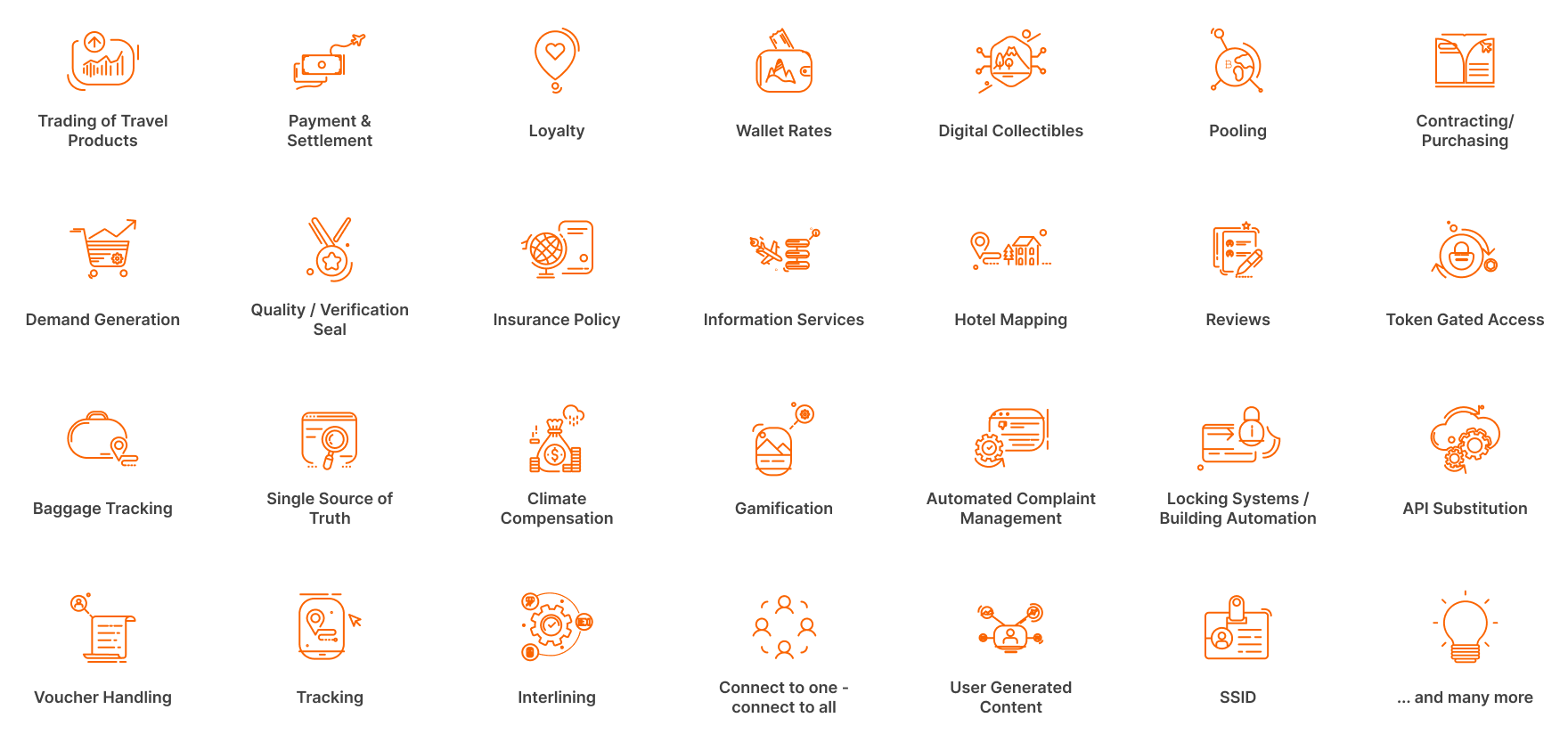This article is your map to navigating Camino Network. All new features, use cases, and important updates will be reflected in this “evergreen” article in business-friendly language. Bookmark the page to revisit.
Camino Network is a blockchain. Look at it as a B2B version of the Internet, tailored specifically for the travel industry. Everything in this ecosystem serves the needs of travel-related companies. We call it the web3 travel ecosystem. It operates on secure, shared, and unified infrastructure where:
Feel free to skip this part if you clearly understand how digital technologies have been changing the travel industry at both B2B and B2C levels.
In the travel industry, the journey from pre-internet times to web3 reflects a transformation on multiple levels toward a community-driven culture facilitated by advancing digital technologies. Below is a brief recap of how things have evolved.


For innovative travel companies, Camino Network is the next logical step in the evolution. With the new digital infrastructure, businesses can enhance their existing business processes and meet the growing demand for seamless digital connectivity on both B2B and B2C levels. If you and your company are looking for solutions to build personalized products and improve the user experience, you are in the right place. Keep on reading!
Now that you have a clear reason to read further, I would like to break down some technical terms that are absolutely important for your better understanding of the new travel ecosystem we are building.
Think of blockchain as a global travel ledger where all transactions and interactions are recorded. Just like a travel itinerary keeps track of all your flights, hotel bookings, and activities, the blockchain maintains a permanent, unchangeable record of all transactions in a decentralized network. Layer 1 means that Camino Network is the base layer, where all the main activities happen.
Validators maintain this decentralized nature of the network. Think of them like conductors on a train who verify tickets. They approve transactions and update the network's state, serving as the blockchain backbone and the governing body deciding how the web3 travel ecosystem will evolve. On Camino Network, all the validators represent travel-related companies, ensuring system integrity.
Therefore, it is a consortium blockchain, which is the most suitable form for the travel industry to provide a cost-effective, scalable, and especially secure environment. Validators go through KYC (know your client) and KYB (know your business) checks and have some "skin in the game" by depositing 100,000 Camino tokens (CAM) as bonds for the validator.
| Characteristic | Public | Private | Consortium |
|---|---|---|---|
| Permissionless | ✅ Yes | ❌ No | ❌ No |
| Read access | 👤 Anyone | 🎟 Invited only | 🛠 Depends on Rules |
| Write access | 👤 Anyone | 🤝 Approved only | 🤝 Approved only |
| Ownership | 🌐 Decentralized | 🏠 Single entity | 🏘 Multiple entities |
| Participant anonymity | ✅ Possible | ❌ No | ❌ No |
| Transaction speed | 🐌 Slow | 🚀 Fast | 🚀 Fast |
Validators (those ticket-checking conductors we discussed) must agree on which transactions (tickets) are true and which are not. For this, they use a framework called the consensus mechanism. On Camino Network, it is called the Proof-of-Stake and Authority (PoSA) validation mechanism. It represents a mix of different methods and has proven to be the most suitable for a travel industry blockchain thanks to its reduced energy consumption and high transactional speed.
Think of a blockchain transaction like sending a postcard from one place to another but in a digital space. The same way tokens are being sent from one wallet to another. It can be payment for a service or a product in the travel industry, but instead of using cash or credit cards, you use tokens. Any exchange of digital assets on a blockchain is a transaction.
Tokens are the fuel of blockchain networks. Just like you have different currencies for different countries, each network can have its own unique token or number of tokens in the blockchain world. On Camino Network, the token is called CAM. It is called a utility token, which means it is used for various transactions within the network.
You need to have a crypto wallet to operate transactions with tokens on a blockchain. Imagine such a wallet as an account where you keep, send, and receive tokens, sign transactions, and interact with smart contracts. But unlike accounts, crypto wallets need more attention regarding security and operations.
Think of a multi-signature (multisig) wallet as a shared safe where a team keeps its digital assets. Just like a safe that needs multiple keys to open, a multisig requires more than one person to agree before any transaction from this wallet can happen. This feature is super useful for teamwork and secure management of digital assets.
Smart contracts are digital programs that automatically enforce rules when certain conditions are met. For example, they can manage hotel booking confirmations. Today, payments and reservations for a room go through different systems. Smart contracts bring these processes under one roof, processing payment and ensuring confirmation in a single transaction. Therefore, it is hard to overestimate the role of such programs for the travel industry, considering their trustworthy, transparent, and tamper-proof way of handling agreements and transactions.
Now that you know and understand the technical language, let’s discover the business opportunities hidden behind these new terms. The list of blockchain use cases in travel being developed on Camino Network by the community members is getting bigger every month. Below, you can see the main directions.

Some of the projects are under NDA, others are open, and you can explore them below:
Sleap.io is already live on Camino Network. It is a new generation of OTA leveraging blockchain connectivity and AI to provide personalized offers to travelers based on their travel history represented by tokens in their wallets.
Camino Network is like a living organism represented in code. It functions, it evolves, it grows. New companies join the ecosystem and benefit from the connectivity provided. New developers deploy their smart contracts. New features are constantly being built by the core team to make the ecosystem a more secure, robust, and comfortable place to work in.
Camino Messenger is a unique tool designed to connect the digital travel world. It is like a chat app, but instead of just sending messages to friends, businesses can use it for B2B peer-to-peer communication. Built by the travel tech community, the messenger provides many solutions companies really need.
Camino Messenger provides global travel data standards for sending and receiving all kinds of travel-related messages. Now, businesses can finally talk to each other in a universal language for travel bookings, requests, confirmations, and other types of information. The list of standards is far from finite because companies joining the network can not only leverage the messenger but also introduce new data standards.
To learn more about the concept, watch the video or request a demo if you would like to start using and building.
For forward-thinking companies, Camino Network is the community to belong. It is more than just technology. It's a space where learning, building, and innovating together with like-minded people to shape the future of the travel industry.
If you know such people working in travel, please share this article with them. It is a great way to onboard more curious people to the web3 travel ecosystem. Subscribe to our newsletter (with over 1000 readers) — a perfect way to stay updated on the latest news from the web3 space presented through the lens of travel.
Subscribe to our newsletter